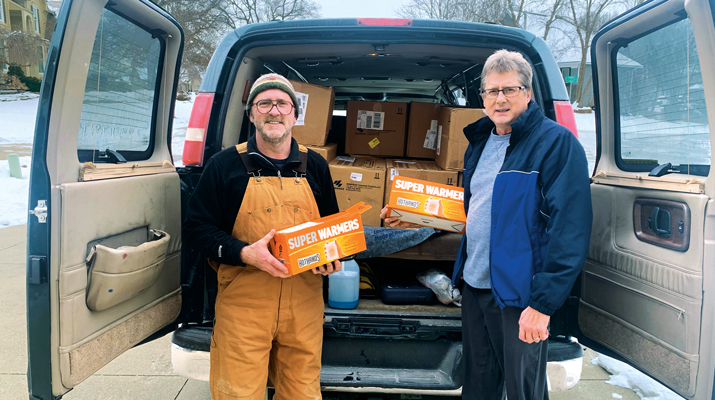Natural gas pipelines advance into propane territory; LPG leaders take notice
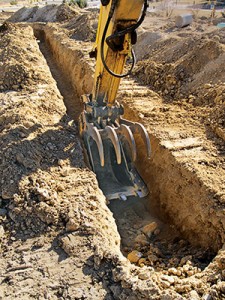
Natural gas expansion attempts are springing up all over the country.
Photo: iStock.com/michelangeloboy
Something smells rotten to numerous propane providers, and it’s not just the mercaptan odor that signals the presence of natural gas.
Noses are out of joint and serious concerns are being raised because natural gas utilities are rapidly expanding into new territories traditionally served by propane – and these efforts are being assisted by governmental incentives promulgated by appointed state regulators and elected lawmakers.
Among the most daunting measures are those allowing natural gas providers to bill their existing ratepayers for the expansion of pipeline networks that can cost $1 million per mile to construct.
Propane marketers need to be vigilant as legislative proposals that are presumably defeated, stalled in committee or otherwise thwarted can crop up again by being reintroduced at subsequent sessions. In areas where natural gas service is already encroaching, propane retailers are advised to step up their customer service strategies to better compete with a vast utility.
“This issue is springing up all over the country,” says Jeffrey Petrash, vice president and general counsel for the National Propane Gas Association (NPGA). “It brews differently in each state.”
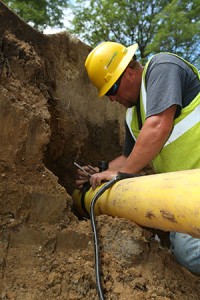
More natural gas pipelines may sprout across the United States in the coming years because of favorable legislation. Photo courtesy Consumers Energy
The variety of benefits bestowed upon natural gas utilities frequently comes at the expense of propane providers, who lose valuable accounts while the new natural gas customers are ultimately likely to experience hefty rate increases down the line, propane industry officials say.
Propane marketers are being called upon to raise their voices in opposition to these governmental pipeline assistance programs. Industry leaders also encourage awareness to under-the-radar rate increases being sought from state public utility commissioners after new arrays of natural gas lines have already been installed at lowball pricing promises.
“If you want to fight this, we have plenty to say, but you have to be engaged,” Petrash says. “If this rears its head in your state, you have to get involved.”
When a pipeline project is being contemplated, “typically the natural gas utilities will first look for a number of companies, whether it’s factories, resorts or other large users,” according to industry consultant Tom Jaenicke, owner of ATomiK Creative Solutions, who has been active in thus far quashing a bill introduced in Michigan. “The main thing to look for is whether they can gather enough customers to pay for it without subsidies, or they’ll quietly seek subsidies” at a later date.
“You need to get all the information on the table,” Jaenicke says.
“And if you’re not on the table, you’re on the menu,” Petrash adds.
“We don’t like the thumb on the scale and the unlevel playing field,” Petrash continues. “The utilities want to get rolled-in rates to get the other customers to pay. They’re trying to find a way to get subsidized. If the numbers worked, they would have done this before.”
Areas lacking natural gas service that are in close proximity to existing pipelines, known as “infill neighborhoods,” are often the prime initial objectives that gain acceptance from residents and business owners.

Energy Information Administration, Office of Oil & Gas, Natural Gas Division, Gas Transportation Information System
“When you start moving out into rural areas, it’s hard to make the numbers work,” says Petrash, hence the push for subsidies.
“Shale gas is prolific and growing rapidly,” he says, providing a key motivational factor among natural gas utilities seeking new markets for their output.
Threats in play
In Michigan, 77 to 80 percent of the residents and businesses are connected to natural gas, says consultant David Lowe of Pro Image Communications, yet the propane industry has recently been battling House Bill 5555, which is laden with natural gas-friendly expansion incentives.
That particular measure sputtered as it failed to make it out of committee, but similar natural gas measures can again be pitched at any moment.
“We don’t think it’s fair. The existing ratepayers will be charged a fee over time to expand natural gas lines to people who don’t have it – that’s corporate welfare,” Lowe says. “Obviously these utilities are spending money with legislators and political action committees, and they’re a lot bigger than the propane industry.
“Every hog barn, chicken barn and business is now in play, and that’s a threat,” Lowe says. “They are now thinking about another option besides me.”
He points out, “The one thing utilities have is typically poor customer service. You can’t reach anybody unless you have a leak. That’s where propane retailers have an advantage – step up your customer service.”
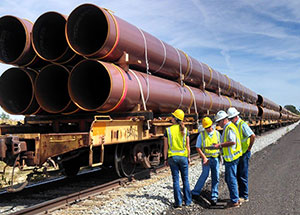
Natural gas utilities are motivated to expand because shale gas is plentiful. Photo courtesy Consumers Energy
Lowe recalls his previous position as a propane retailer: “In 1996, I lost 47 of my best-paying customers to a 4.5-mile expansion; I went to school with these people and their parents. I lost 2 percent of my business, which doesn’t seem like much, but it really hurt us.”
In addition to diminished revenues, propane tanks had to be collected from the former accounts, “and suddenly I had assets that I couldn’t use,” he says.
Consumers Energy, which provides electricity and natural gas, is a supporter of HB 5555.
“If this bill were passed, Consumers Energy estimates it could affordably connect as many as 60,000 to 70,000 customers in our service territory, representing $160 million of potential savings in annual fuel costs,” says Garrick Rochow, the utility’s vice president of customer operations and quality, who testified before Michigan’s House Energy and Technology Committee in May.
“In the first five years, this bill could be directly responsible for the connection of more than 15,000 additional customers.”
“We are working to hook up communities and customers that are interested in natural gas,” says Brian Wheeler, company spokesman. “We work closely with Michigan’s agricultural community, and work to make sure they have reliable, dependable energy.”
Consumers Energy is spending $150 million this year on natural gas pipelines along with its $120-million Southwest Michigan Pipeline Project, which will run 24 miles of new mains through St. Joseph and Branch counties.
The Michigan Propane Gas Association (MPGA) spent at least $30,000 in its fight against HB 5555.
“Us propane guys want a level playing field. If the ratepayers pay for it, these natural gas guys can run lines wherever they want, and the rates will go up to fund something that’s not going to benefit the existing customers,” says David Long, an MPGA past-president who owns Long’s Propane Gas.
“I don’t want to say the sky is falling, but in Michigan it has the potential to create a substantial impact on the propane industry,” says Excel Propane’s Wayne Kohley, chairman of MPGA’s governmental affairs committee. “The farmers are definitely in support of this legislation because they don’t have to pay the full price [of the conversion]. They’re like, ‘Bring it in.’ I wish I could have someone do that for me.”
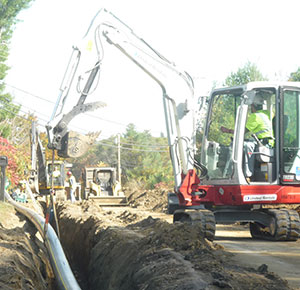
Propane marketers can offer free energy audits for their customers as one way to fend off natural gas’ encroachment. Photo courtesy Summit Natural Gas of Maine
Negative impacts
Propane marketers in Washington are keeping a close eye on their statehouse after a natural gas expansion incentive failed to gain enough momentum for passage.
“That doesn’t mean it won’t come back,” says Baron Glassgow, executive director of the Pacific Propane Gas Association. “It would have had a dramatically negative impact on the propane industry. They would have gone after large propane users like industrial and commercial accounts – they would have been the first targets – but then after that the path would be subjected to expanding residential accounts.
“We teamed up with the industrial natural gas users and electric utilities,” he says, adding that the association also leveraged existing relationships with individual legislators.
Despite an apparent lack of economically feasible population density, potential natural gas converts in Missouri have been shown enticing savings to motivate switchovers, according to Steve Ahrens, executive director of the Missouri Propane Gas Association.
“Sometimes the promise of natural gas can be unsustainable,” he says.
However, the Lake of the Ozarks resort region now has 4,000 new natural gas customers on the boot heels of a push into Branson three years ago.
“We never thought we’d see natural gas going into these vacation areas, but now it’s there. They’ve taken some of the big hotels,” says Ahrens, who adds that the utility is now seeking a 40 percent rate increase while expressing confidence that it can wrangle half of the existing propane accounts.
“They are underpricing the product,” Ahrens says. “There is damage being done to propane providers in the area; the pricing is so low that the natural gas providers will have to raise the rates, and propane providers will have already been harmed. We’ll compete with anyone, but it has to be fair.”
More than half of the homes in Connecticut use fuel oil, and “our governor and his administration feels that expanded natural gas will encourage many of the households to convert,” says propane industry lobbyist T. Michael Morrissey. New natural gas customers can spread the conversion costs over a 15-year period.
“They’re rolling out a lot of mains in Connecticut,” he says. “There’s already an impact. Some marketers are losing loads because of the natural gas expansion. We have to find alternative markets to replace some of the [propane] gas we’re going to lose.”
Getting out in front
Mindful that the average American homeowner moves every seven years, Jaenicke at ATomiK Creative Solutions says wavering propane customers need to know that “recouping your investment may not work,” citing a variety of conversion costs that might not be readily apparent.
“You can rack up $5,000 to $15,000 in a hurry,” he says.
Interior pipes and major appliances, such as the water heater or furnace, may require significant upgrades or outright replacement.
Propane marketers are in position to fend off this encroachment of natural gas by providing free energy audits for their customers and offering insulation tips and other advice, according to Jaenicke. Enhancing their service is the way to compete.
“Switching from propane to natural gas does not save you any energy,” he says. “The cheapest Btu you can buy is through efficiency improvements and not switching energy sources – you’re still letting 40 percent of the heat go up the chimney.”
Work the phones. Ring doorbells. Engage customers and sell them once again on the benefits propane delivers.
“You need to get out in front of this,” Jaenicke says.











